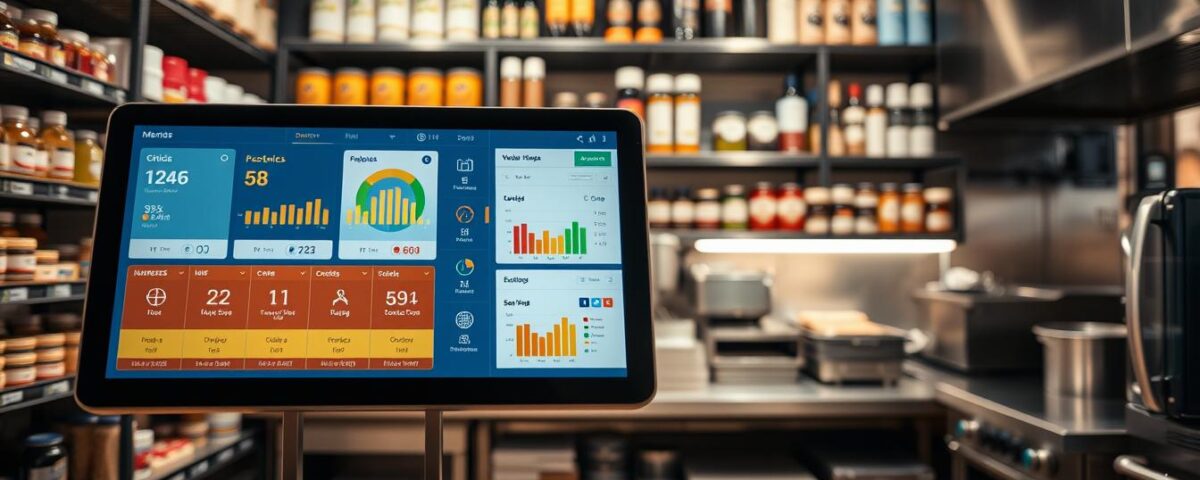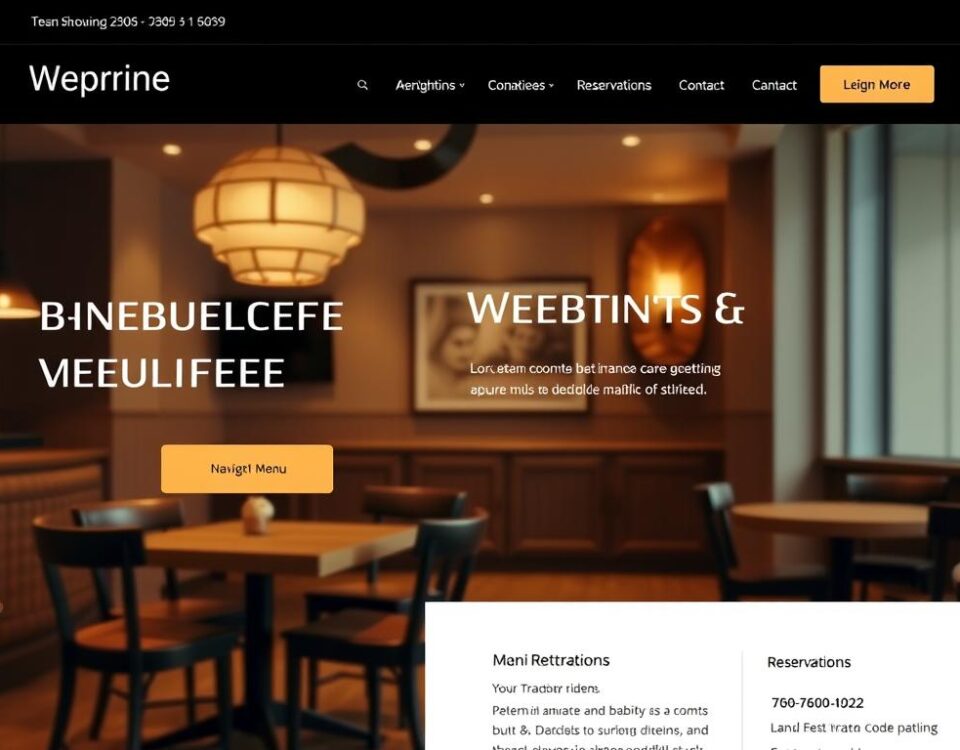
Restaurant POS Systems Compared: 2025 Buyer’s Guide
August 24, 2025
How to Optimize Google My Business and Rank #1 Locally
August 25, 2025As a restaurateur, managing inventory can be a daunting task. I recall a busy Friday night when we ran out of our signature dish’s main ingredient due to poor inventory tracking. It was a costly mistake that not only disappointed our customers but also resulted in lost revenue.
Did you know that effective inventory management software can save restaurants up to 2% in annual sales by reducing waste and overstocking? With the right tool, you can streamline your operations, minimize losses, and maximize profits.
After testing five different management software systems, I’m excited to share my findings with you. In this article, I’ll reveal which one stands out as the best for restaurants like yours.
Key Takeaways
- Discover the top-rated inventory management software for restaurants.
- Learn how the right software can transform your restaurant operations.
- Understand the importance of integrating inventory management with POS systems.
- Find out the key features to look for in inventory management software.
- Get insights into the pricing and value of different inventory management tools.
Why Restaurant Inventory Management Matters
Effective restaurant inventory management is the backbone of a profitable and efficient dining establishment. It is crucial for maintaining profit margins, reducing food waste, and ensuring smooth operations. Without the right restaurant inventory management software, keeping track of inventory levels, raw ingredients, and menu items can be overwhelming.
The right inventory management software allows restaurant owners to control costs, forecast demand, and make smarter purchasing decisions with real-time data and automated reporting. By implementing an effective inventory management system, restaurants can prevent over-ordering, reduce waste, and optimize food costs.
Statistics show that restaurants typically lose a significant amount of money due to poor inventory management. The right system can help recapture those losses. Moreover, proper inventory management ensures fresher ingredients and better customer experiences by maintaining optimal stock levels and rotation.
| Benefits | Description | Impact |
|---|---|---|
| Cost Control | Reducing unnecessary expenses | Higher Profit Margins |
| Food Quality | Ensuring fresher ingredients | Better Customer Experiences |
| Staff Efficiency | Reducing manual counting and tracking | Improved Customer Service |
By leveraging modern inventory management tools, restaurant owners can make more informed business decisions about menu planning, pricing, and vendor relationships. This data-driven approach helps in optimizing inventory cost and improving overall operational efficiency.
What to Look for in Restaurant Inventory Tools

Restaurant inventory management has become more sophisticated, with modern tools offering a range of features to streamline operations. Today’s leading restaurant inventory management solutions offer real-time tracking, low stock alerts, and automated inventory management features that make counting inventory and managing inventory variance easier than ever.
When evaluating restaurant inventory tools, there are several essential features to consider. First, real-time tracking allows you to monitor your inventory levels as they change, ensuring you’re always up-to-date. Additionally, automated ordering can help prevent stockouts and overstocking by automatically generating orders based on your inventory levels.
Another crucial aspect is the tool’s ability to integrate with your existing POS system. Seamless integration ensures that your inventory levels are always accurate and up-to-date, reducing the risk of discrepancies. Furthermore, reporting and analytics capabilities provide valuable insights into food costs, waste management, and menu profitability, helping you make informed decisions.
A user-friendly interface and mobile accessibility are also vital, especially in busy restaurant environments where staff need to quickly update inventory on the go. Moreover, vendor management features can streamline your ordering processes and help maintain good supplier relationships.
Lastly, it’s essential to consider the scalability of the inventory tool. As your restaurant business grows, the software should be able to accommodate multiple locations and increasing inventory demands. By focusing on these key features, you can find a restaurant inventory tool that meets your needs and supports your business’s growth.
My Evaluation Criteria
When evaluating inventory management software, I considered several key factors to determine the best tools for restaurants.
My evaluation was based on a weighted criteria that included Pricing (15%), General features (30%), Advanced features (30%), Ease of use (15%), and Expert score (10%).
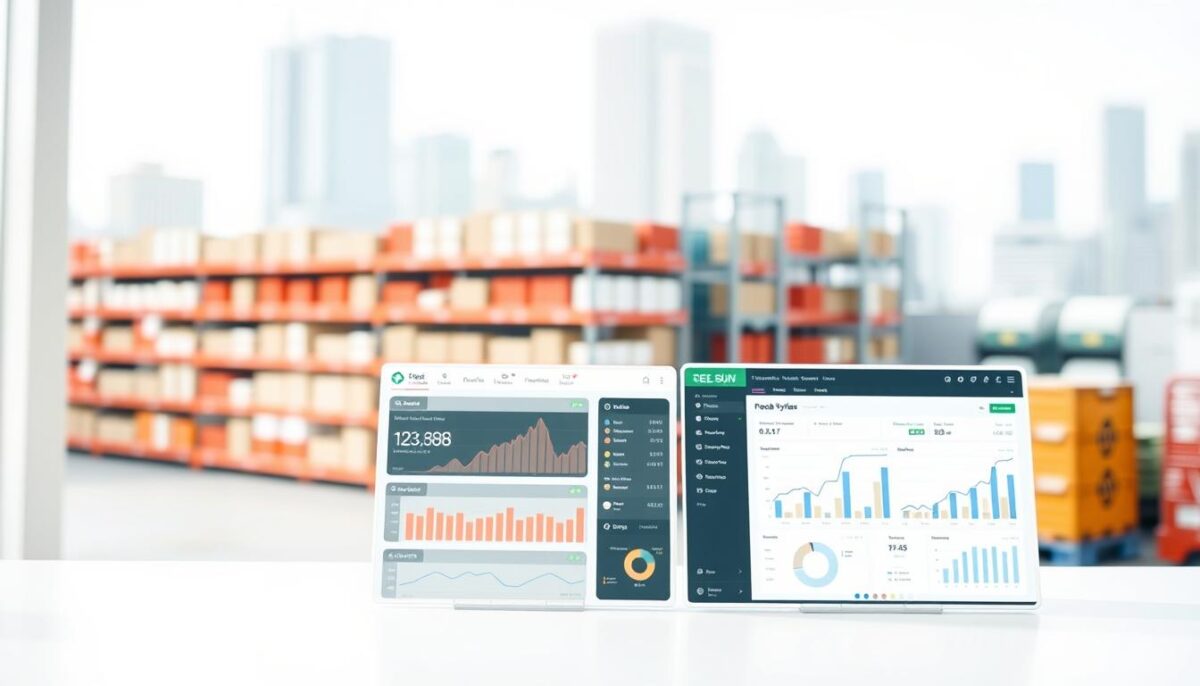
Pricing was assessed based on free trials, contract length, contract pricing, and installation fees. A comprehensive analysis of general features included live sales tracking, count sheet accessibility, cloud access, low-stock alerts, and outside tech integrations.
The advanced features considered in this review included barcode scanning, mobile count abilities, order forecasting, vendor management, and EDI integrations. These features are crucial for efficient inventory management and restaurant inventory management.
Ease of use was determined by customer service hours, online support, provided training, and the ease of setup for each software. The expert score was influenced by user reviews, the value compared with the software’s cost, and the service’s popularity in the industry.
By combining these factors, I was able to provide a comprehensive evaluation of various inventory management tools and identify the most suitable ones for restaurant operations.
MarketMan: Best Overall Restaurant Inventory Software

With its robust features and user-friendly interface, MarketMan is my top pick for the best overall restaurant inventory software. This cloud-based solution is designed to streamline purchasing, control costs, and optimize stock levels with just a few clicks.
Overview
MarketMan provides restaurant owners with a comprehensive inventory management system that eliminates the need for expensive hardware installations. Its fully cloud-based platform is accessible from any device, making it ideal for busy operators managing multiple locations.
Pros
One of the standout features of MarketMan is its suggestive ordering capability, which helps restaurants maintain optimal inventory levels, reducing food waste and improving cost efficiency. Additionally, the accounts payable management feature allows for seamless tracking of vendor invoices, ensuring timely payments and better financial oversight.
Cons
While MarketMan offers a robust set of features, its pricing structure may be a consideration for some restaurant owners. The starting cost is $199 monthly, and there are contract options to consider.
Key Features
The mobile app provided by MarketMan enables restaurant managers to oversee purchasing decisions, monitor inventory variance, and generate automated reports from anywhere. This flexibility is particularly beneficial for operators managing multiple locations or those who need to make decisions on the go.
MarketMan’s automated reporting and inventory tracking features have helped numerous restaurant owners reduce waste and improve profitability. By leveraging these features, restaurants can make data-driven decisions to optimize their inventory management and improve their bottom line.
Lightspeed Restaurant: Easiest to Use POS-Built Inventory

Lightspeed Restaurant has revolutionized inventory management for restaurants by integrating it seamlessly with its POS system. This comprehensive solution is particularly beneficial for larger restaurant chains and enterprises, allowing them to manage inventory across multiple locations efficiently.
Overview
Lightspeed Restaurant is an industry-leading technology designed to help businesses manage their inventory with real-time tracking of stock levels and order accuracy. Its ability to integrate with various accounting software, employee management tools, and hotel PMS makes it a versatile solution.
Pros
One of the standout features of Lightspeed Restaurant is its auto-86 feature, which automatically marks menu items as unavailable when ingredients are out of stock, preventing customer disappointment. Additionally, its one-click reordering simplifies the inventory replenishment process, making it ideal for busy environments.
Key Benefits:
- Real-time inventory tracking
- Automated accounting and purchasing features
- Seamless integration with POS and other management tools
Cons
While having inventory management built into the POS system offers numerous advantages, it may also mean that some features are less customizable compared to standalone inventory solutions. However, for restaurants already using Lightspeed’s POS, this integration is a significant advantage.
Key Features
Lightspeed Restaurant’s ability to forecast demand based on historical sales data allows businesses to prevent low stock alerts and reduce COGS. The platform’s automated features help restaurant owners track goods sold, food costs, and price fluctuations with ease.
Key Features Include:
- Demand forecasting
- Automated accounting
- Real-time stock tracking
In conclusion, Lightspeed Restaurant offers a robust inventory management solution that’s particularly suited for restaurants already invested in its POS system. Its ease of use, combined with powerful features like auto-86 and one-click reordering, makes it an attractive option for businesses looking to streamline their inventory management processes.
xtraCHEF by Toast: Best for Rebates
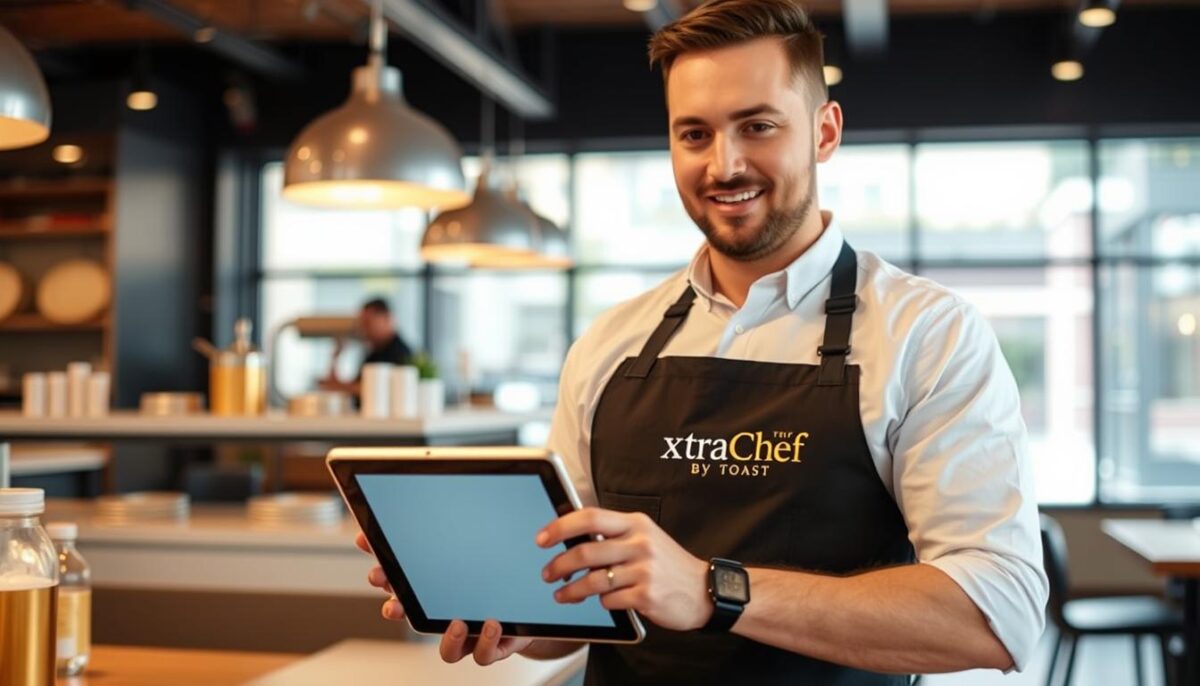
For restaurants seeking to reduce food costs, xtraCHEF by Toast offers a compelling solution through its rebate program. This inventory management software is designed to help restaurants streamline their operations and maximize profitability.
Overview
xtraCHEF by Toast is a powerful tool that integrates seamlessly with Toast’s POS system, providing a comprehensive inventory management experience. Its robust features enable restaurants to track inventory levels, manage orders, and optimize their supply chain efficiently.
Pros
Rebate Program: xtraCHEF’s rebate program is a standout feature that can significantly reduce food costs for restaurants. By automating the rebate process, restaurants can ensure they receive the maximum rebates available from their suppliers.
Seamless Integration: The software integrates perfectly with Toast’s POS system, creating a unified inventory management experience across all restaurant operations.
Cons
While xtraCHEF by Toast offers numerous benefits, some users may find the initial setup process complex. Additionally, the pricing structure, although not publicly listed, is reported to start around $149 according to third-party sources, which may be a consideration for smaller restaurants.
Key Features
Vendor EDI Integrations: xtraCHEF allows for automated ordering and payment processing through its vendor EDI integrations, saving time and reducing errors.
Multi-Location Support: The software is particularly valuable for restaurants with multiple locations or those that have several people managing inventory, as it provides a centralized platform for managing inventory across different sites.
By leveraging xtraCHEF by Toast, restaurants can not only streamline their inventory management but also capitalize on rebate opportunities to enhance their bottom line. With its robust features and seamless integration with Toast’s POS system, xtraCHEF is an ideal solution for restaurants looking to optimize their operations.
Yellow Dog: Best for Catering Businesses & Pour-Limited Bars
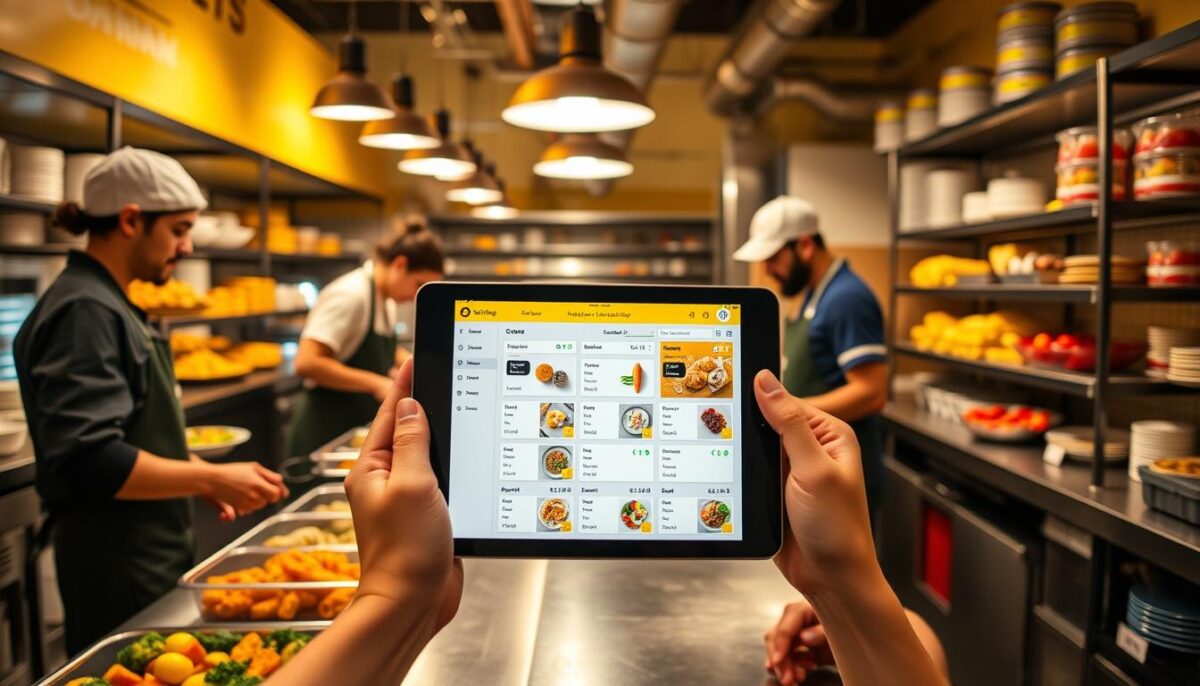
Yellow Dog is a game-changer for catering businesses and bars with pour limitations, offering specialized features that streamline inventory management.
Overview
Yellow Dog Inventory is a user-friendly, cloud-based restaurant inventory management software designed to help small and medium-sized restaurants, cafes, and bars streamline their inventory management process. The platform provides real-time tracking of inventory items, helping businesses maintain optimal stock levels, reduce food waste, and control costs efficiently.
Pros
One of Yellow Dog’s standout features is its recipe costing and management tools, which allow restaurant owners to calculate food costs, optimize menu pricing, and track theoretical costs with ease. Its automated purchasing system helps ensure that restaurants order only what they need, preventing overstocking or shortages.
Specialized Features for Catering Businesses: Yellow Dog’s focus on commissary operations makes it ideal for catering businesses that need to track production worksheets and inventory across different locations.
Freepour Integration for Bars: Yellow Dog’s Freepour integration for bar inventory tracking helps monitor alcohol usage and prevent over-pouring, making it a valuable tool for bars with pour limitations.
Cons
While Yellow Dog offers a robust set of features, its pricing structure is custom-quoted based on business needs, which may make it less transparent for some potential users.
Key Features
Real-Time Inventory Cost Updating: Yellow Dog’s real-time inventory cost updating feature allows businesses to see what’s on hand and the cost of goods sold at any moment, enabling better cost control and decision-making.
Automated Purchasing System: The automated purchasing system ensures that restaurants order the right quantities, reducing the risk of overstocking or running out of critical items.
Crunchtime: Best for Overall Cost Control

Crunchtime is a game-changer for restaurants seeking comprehensive cost control. This advanced inventory management software helps businesses streamline operations with automated forecasting and real-time tracking.
Overview
Crunchtime’s platform excels in inventory counts, recipe costing, and order accuracy, helping restaurants reduce food waste and improve profit margins. The system’s labor and scheduling tools allow businesses to optimize staffing levels based on sales forecasts, reducing labor costs while maintaining operational efficiency.
Pros
One of Crunchtime’s standout features is its impressive integration capabilities with over 1,000 different restaurant POS and accounting software systems. This makes it an ideal choice for restaurants already using other software solutions.
The mobile app enables extremely accurate inventory tracking through its counter functionality, improving count accuracy and efficiency. Additionally, Crunchtime’s sales forecasting capabilities help restaurants determine optimal inventory levels based on historical data and trends.
Cons
While Crunchtime offers a custom pricing model, the lack of transparent pricing may be a drawback for some businesses. However, for many restaurant operations, the cost control features make it worth considering.
Key Features
Crunchtime’s key features include automated forecasting, real-time tracking, and labor and scheduling tools. The system also offers learning and development tools, making it easier for staff to stay up to date with inventory management systems, purchasing decisions, and daily tasks.
By implementing Crunchtime, restaurants can achieve better cost control across all aspects of their operation. The software’s ability to track cost goods sold and optimize inventory levels helps improve the bottom line.
In conclusion, Crunchtime is an excellent choice for restaurants focused on comprehensive cost control. Its advanced features and integration capabilities make it a valuable tool for optimizing restaurant operations.
MarginEdge: Best for Smaller Restaurants

MarginEdge is a game-changer for small restaurants looking to streamline their inventory management. This cloud-based platform offers an intuitive interface that simplifies tracking inventory, sales data, and recipe costing, making it an ideal choice for small to mid-sized restaurants.
Overview
MarginEdge is designed to enhance guest engagement while improving cost savings through better inventory tracking and recipe costing. The platform provides valuable insights into food cost, order accuracy, and inventory levels, helping restaurant owners streamline operations efficiently.
Pros
One of MarginEdge’s standout features is its ability to process handwritten invoices, making it accessible for restaurants working with vendors who don’t provide digital documentation. Additionally, MarginEdge offers same-day budget tracking reports that enable quick decision-making based on current financial data.
MarginEdge is particularly well-suited for smaller restaurant operations that need straightforward inventory management without overwhelming complexity.
Cons
While MarginEdge offers numerous benefits, there are some trade-offs to consider. Smaller restaurants should be aware of its lack of barcode scanning functionality and limited customer support options.
Key Features
MarginEdge’s key features include its ability to track sales data, forecast demand, and optimize menu items to increase profitability. The platform also offers a cloud-based POS system with an intuitive interface.
The pricing structure is $330 per location monthly, which is competitive compared to other options for small restaurants.
How Restaurant Inventory Tools Transform Operations
A well-structured inventory management process is the backbone of any successful restaurant. With the right inventory software, businesses can track inventory items in real time, minimize inventory cost, and ensure order accuracy while maintaining optimal operational efficiency.
I have found that implementing the right inventory tools can dramatically transform restaurant operations by automating tedious manual processes and providing real-time visibility. For instance, inventory management software helps restaurants reduce food waste by tracking expiration dates and optimizing stock rotation. This not only saves costs but also contributes to sustainability.
These tools also improve staff efficiency by freeing up time previously spent on manual inventory counts, allowing team members to focus on customer service. Moreover, inventory management systems provide valuable data insights that help restaurant owners make more informed decisions about menu planning, pricing, and vendor relationships.
Let’s take a look at how different inventory management tools can impact various aspects of restaurant operations:
| Feature | Manual Inventory | Inventory Management Software |
|---|---|---|
| Tracking Inventory | Time-consuming and prone to errors | Real-time tracking and automated updates |
| Food Waste Reduction | Limited visibility into expiration dates | Automated tracking of expiration dates and stock rotation |
| Staff Efficiency | Staff tied up in manual inventory counts | Staff freed up to focus on customer service |
By adopting effective inventory management tools, restaurants can transform their operations, improve profitability, and enhance customer satisfaction. As seen in various success stories, the right inventory management system can make a significant difference in a restaurant’s overall performance.
How to Choose the Right Restaurant Inventory Management Software
As a restaurant owner, finding the perfect inventory management software is essential for reducing costs and enhancing customer satisfaction. Choosing the right restaurant inventory management software can be a daunting task, but by following a few key steps, you can make an informed decision.
First, assess your current POS system and budget. It’s crucial to ensure that the inventory software you choose is compatible with your existing POS system to avoid integration issues. Consider your budget and determine how much you are willing to spend on inventory management software.
Next, account for the size and complexity of your restaurant. Different solutions are optimal for small cafes versus multi-location operations. Consider the number of locations, suppliers, and inventory items you need to manage.

Determine the level of support you may need for setup and ongoing maintenance. Some inventory management software providers offer extensive support, while others may require more self-sufficiency.
Consider your ideal contract length and the flexibility you need. New restaurants or those with changing needs may benefit from shorter contract lengths or more flexible agreements.
Seeking recommendations from other restaurant professionals in your local community can provide valuable insights into the effectiveness of different inventory software solutions.
| Key Considerations | Description |
|---|---|
| POS System Compatibility | Ensure the inventory software is compatible with your existing POS system. |
| Business Size and Complexity | Choose software that suits the size and complexity of your restaurant operations. |
| Support and Maintenance | Determine the level of support needed for setup and ongoing maintenance. |
By carefully evaluating these factors and aligning them with the features you need, you can select the most suitable restaurant inventory management software for your business.
Common Implementation Challenges and Solutions
Adopting the right inventory management software is vital, but restaurants must navigate several common implementation challenges. Good restaurant inventory management software is designed to be user-friendly, but understanding potential hurdles is crucial for a smooth transition.
Here are four common challenges that arise during implementation and how to overcome them:
- Incomplete or inaccurate starting data: Import your current data into the new software and ensure it’s comprehensive. Pull information from vendors, POS, online ordering platforms, or any other source where inventory data resides.
- Incomplete staff training: Grant the individual handling inventory management ample time to learn the new software. They should be able to place orders, understand data, and solve challenges with ease.
- Seasonal menu changes: Updates to your menu can alter what and how much you order from vendors. Plan for special events, seasonal menus, and other changes that impact your inventory management.
- Inventory data living in multiple places: If data exists in various places, there’s an increased risk of inventory variance and error. Integrate all your tools to ensure accurate inventory insights.
By understanding these challenges and implementing the right solutions, restaurants can ensure a successful transition to new inventory management software. Effective management of these challenges will lead to more accurate data and better decision-making.
Future Trends in Restaurant Inventory Management
Restaurant inventory management is evolving rapidly, driven by the need for greater efficiency to boost profitability. As technology advances, we can expect significant changes in how restaurants handle inventory.
Several emerging trends are set to reshape the industry. Automated inventory management is one such trend, where software assesses inventory and places orders automatically without direct human intervention. This not only saves time but also reduces the likelihood of human error.
- AI-powered inventory forecasts are becoming increasingly popular, allowing restaurants to project future inventory needs with greater precision based on guest purchases and buying habits.
- Feature customization is another trend, where restaurants can personalize dashboards to track specific metrics based on unique goals.
- The growing trend toward fully integrated restaurant management ecosystems is also noteworthy, where inventory, POS, accounting, and customer management all work together seamlessly.
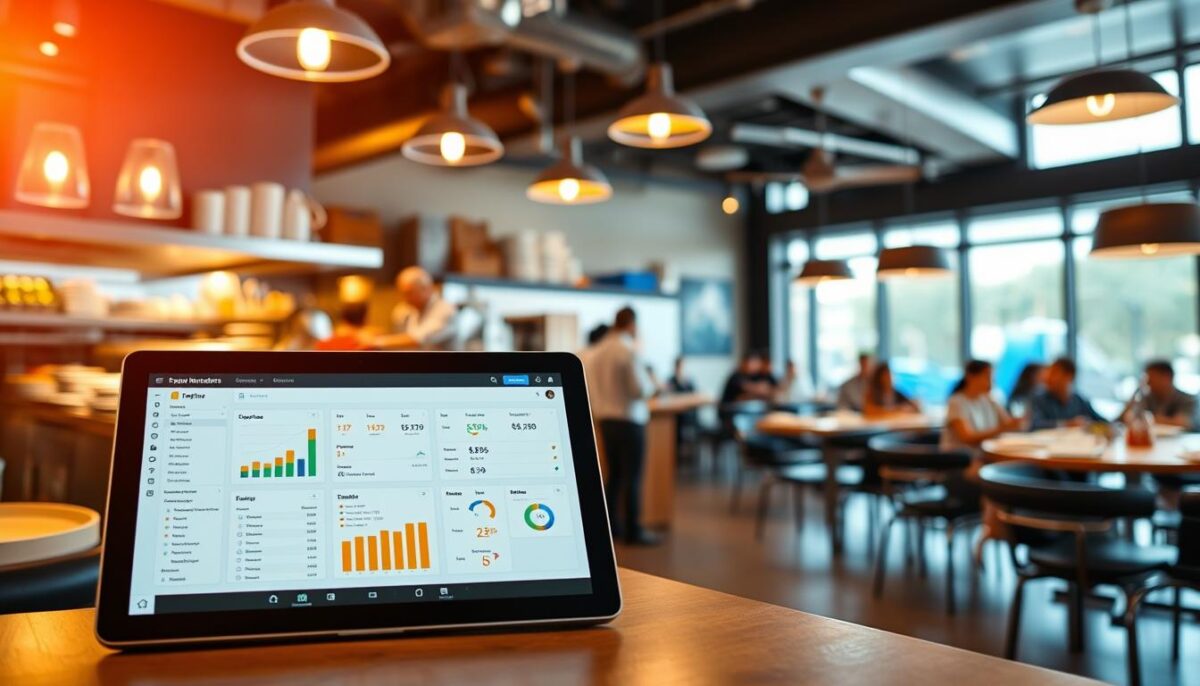
Additionally, mobile technology is evolving to allow for more sophisticated inventory management on the go, including voice commands and image recognition for faster counting. We may also see blockchain technology impact restaurant inventory management in the future, particularly for tracking food safety and supply chain transparency.
By embracing these trends, restaurants can improve their inventory management, reduce costs, and enhance profitability.
Conclusion: Making the Right Choice for Your Restaurant
After evaluating five inventory tools, it’s clear that the right choice for your restaurant depends on several key factors. As I’ve compared the top options, MarketMan stands out as the best overall restaurant inventory software due to its comprehensive features and scalability.
However, the “best” inventory solution varies depending on your restaurant’s specific needs, size, and operational style. For instance, if ease of use is a top priority, Lightspeed Restaurant is worth considering. On the other hand, if you’re looking for rebates, xtraCHEF by Toast is a great option.
When choosing an inventory management tool, it’s essential to prioritize features based on your most pressing inventory challenges and business goals. Consider what will drive the most significant impact on your bottom line. Investing in quality inventory management software typically pays for itself through reduced waste, better purchasing decisions, and improved operational efficiency.
To ensure you find the right fit for your unique business needs, take advantage of free trials and demos before committing to a solution. By doing so, you’ll be able to make an informed decision that aligns with your restaurant’s operational goals and long-term growth.
In conclusion, selecting the right inventory management software is a critical decision that can significantly impact your restaurant’s profitability and guest loyalty. By considering your specific needs and exploring the options available, you can make a choice that supports your business’s success.
FAQ
What is the primary function of inventory management software?
The primary function is to help manage and track food costs, cost of goods sold, and overall inventory cost.
How can barcode scanning improve my inventory tracking?
Barcode scanning automates the process, reducing manual errors and increasing the speed of inventory counts.
What features should I look for in inventory management systems?
Look for features like online ordering integration, menu item management, and detailed reporting to control costs.
Can inventory management software help with cost savings?
Yes, by optimizing inventory levels and reducing waste, you can achieve significant cost savings.
How do I choose the best inventory software for my business?
Consider factors like ease of use, customer support, and the size of your business to make an informed decision.
Is inventory management suitable for small businesses?
Absolutely, inventory management is beneficial for businesses of all sizes, including small ones, to improve their bottom line.
Can I manage my inventory using a mobile app?
Many inventory management solutions offer mobile apps for on-the-go management.
How does inventory management software integrate with POS systems?
Many solutions integrate seamlessly with POS systems, streamlining operations and reducing manual data entry.
